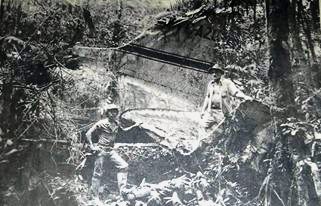Circumstances:
Flight 129 departed Cleveland, Chic, at 1807, April 28, 1951, for Chicago, Illinois, with stops scheduled at Fort Wayne and South Bend, Indiana The crew consisted of Captain E K Swallow, First Officer H R Miller, and Stewardess Beverly Fllis, there were eight passengers on board at the time of departure The aircraft weighed 24,180 pounds, which was within the certificated gross weight limit of 25,320 pounds, and the load was properly distributed A flight plan filed by the crew with ARTC (Air Route Traffic Control) indicated an IFR (instrument flight rule) flight at a cruising altitude of 4,000 feet with South Bend and Toledo, Ohio, designated as the alternate airports The "Trip Weather Analysis" (a form prepared by the crew before departure) indicated that scattered cumulus and thunderstorms were expected south of the course to Fort Wayne Also, that a squall line extending in a north-south direction was moving eastward across Illinois and Indiana at an estimated speed of 35 miles per hour and was expected to be in the vicinity of South bend upon the flight's arrival there. After takeoff, Flight 129 was advised by company radio that it was cleared by ARTC via Green Airway No 3 over Sandusky, Ohio, to the Toledo range, to maintain 3,000 feet and to contact Toledo approach control upon arriving there Flight 129 advised they were going to Fort Wayne and not Toledo Accordingly, ARTC amended the flight's clearance to proceed to Fort Wayne via Green Airway No 3 and Blue Airway No 44 and to maintain 4,000 feet The flight proceeded and a routine company radio report was made when over Sandusky At 1847, the flight reported over Toledo and estimated its arrival Fort Wayne at 1932 At this time, the Fort Wayne 1830 weather sequence report was given the flight which was, "ceiling estimated 25,000 feet, thin Broken clouds, visibility 0 miles, wind southwest 5 miles per hours "Seventeen minutes later at 190', flight 129 called Toledo tower and requested, through APTC permission to cruise at 2,300 feet because of turbulent conditions This was not approved because of other traffic At 1920 the flight reported it was approaching Fort Wayne and was changing to tower frequency The flight reported again when nineteen in less northeast of Bauer Field and was advised at Runway 22 was the runway in use and that the wind was five to ten miles per hour from the southwest At the time this transmission was made there was a moderate amount of station and the flight reported "We are not recanting you very clearly but I think you said, `Straight 11 runway 22' We will call later, closer in ". Because of thunderstorm activity in the area, three other aircraft were requesting instructions to land at approximately the time Flight 129 was making its approach Two of these aircraft landed successfully and the pilot of one, upon request, advisee the tower that the thunderstorm was approximately ten miles west of the airport. At the time the four aircraft were approaching Baer Field, United *** 12 degrees was number four to land in the traffic pattern immediately behind *** World Airlines' Flight 240, a DC-3 aircraft then these latter aircraft were approximately one and two and one-half miles, respectively, from the approach end of Runway 22, the wind at the airport shifted to west-northwest and increased in velocity from 5-10 miles per hour to 40 miles per hour Both flights were advised by the tower of the sudden change of wind direction and increased velocity, and a landing on Runway 27 was suggested, it being more nearly into the wind Upon receiving this message the flights immediately turned to the left to align with this runway. When these aircraft were east of the airport the wind increased to 60-65 miles per hour with gusts to 85 miles per hour and a heavy rainfall began, accompanied by lightning and severe static The flights were quickly advised of the weather change but, due to the sudden decrease in visibility, neither flight was seen again by the tower Flight 129 immediately advised, "United 129 heading east" This was closely followed by a message from TWA's 240, "Pulling out" In order to avoid a possible collision the tower then requested separation altitudes for these aircraft from Chicago ARTC and was advised that Flight 129 was assigned an altitude of 4,000 feet and that Flight 240 was assigned 3,000 feet Both clearances were broadcast from the tower several times without acknowledgment. At 1932 m orange-colored flash was seen to the east-southeast from the tower It was later determined that United's Flight 129 had crashed in a field 2 6 miles east-southeast of the airport TWA's Flight 240 proceeded safely to Toledo. The aircraft disintegrated on impact and all 11 occupants were killed.
Probable cause:
The Board determines that the probable cause of the accident was the severe down draft encountered which caused the aircraft to strike the ground in a near level attitude. The following findings were reported:
- The squall line moved across northern Illinois and northern Indiana considerably faster than was forecast,
- A line of thunderstorms was known to be approaching Fort Wayne However, it was believed that aircraft in the area could effect safe landings prior to the storm's arrival there,
- When the subject flight and another were approaching Runway 27, they were advised of the surface wind's increased velocity to 65 miles per hour with gusts to 85 miles per hour,
- When the approach was abandoned the aircraft encountered the forward edge of the squall line and was subjected to a severe down draft from which recovery could not be made.







